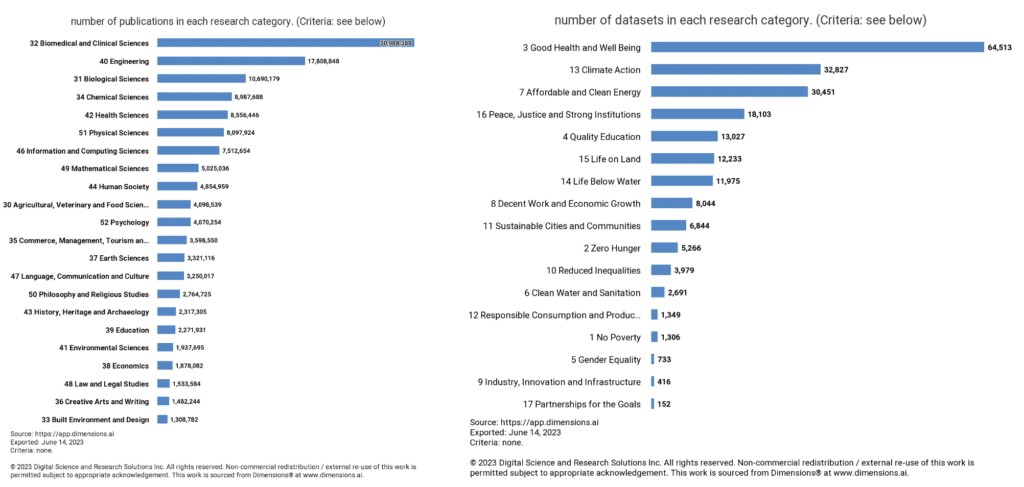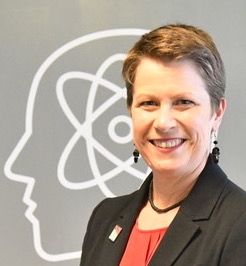The Public
Bang for Buck
Following part 1of this series, which focused on researchers, and part 2, which focused on machines, it’s time to talk about the third puzzle piece – those impacted by research.
The general public, who pay for research via their taxes, should be able to benefit from it democratically. This is not the case. Non-researchers do not have access to over 50% of the academic literature (below). This is particularly problematic when it comes to healthcare, with the caveat that each nation-state has its own way of providing treatment to the sick. The basic science that most if not all pharmaceutical research is built on is largely government-funded.
We also live in a time where researchers are evidencing that “Science Is Getting Less Bang for Its Buck“. Despite vast increases in the time and money spent on research, progress is barely keeping pace with the past. This means that we need to come up with a new way of working to generate new discoveries and knowledge. As highlighted in the previous post in the series; “By leveraging large volumes of FAIR data, machines can accelerate the processing and analysis of information, leading to the generation of new knowledge and empowering researchers in their endeavours”.
Findable, accessible, interoperable and reproducible (FAIR) open academic data enables the general public to access a wealth of knowledge and information that was previously confined within academic circles. By making research findings, scholarly articles, and educational resources openly available, open academic data promotes a more inclusive and equitable dissemination of knowledge. This empowers individuals, regardless of their affiliation with academic institutions, to stay informed, expand their understanding of various subjects, and make better-informed decisions in their personal and professional lives.
Policymakers, government agencies, and non-profit organisations can leverage FAIR data to inform policy formulation, assess the effectiveness of interventions, and address social, environmental, and economic issues. By relying on transparent and reliable data, decision-makers can make more informed choices, leading to better outcomes and improved public welfare.
This comes full circle as we see the same policymakers advocating for FAIR data. This ranges from encouragement from cOAlition S…:
Although the Plan S principles refer to peer-reviewed scholarly publications, cOAlition S also strongly encourages that research data and other research outputs are made as open as possible and as closed as necessary.
Guidance on the implementation of Plan S
…to the core goal of the Office of Science and Technology Policy (OSTP) Memo (the OSTP is responsible for advising the President on matters related to science, technology, and innovation, and their memos often outline policy priorities, initiatives, or guidelines in these areas):
The goal of the memo is to provide free, immediate (without embargo), and equitable access to research that is federally funded. This applies to all federal agencies. This applies to both peer-reviewed publications and underlying scientific data
OSTP Memo
Trust
Open, FAIR data promotes transparency and accountability in research and academia. When research findings and data are openly available, it allows for peer review, reproducibility, and scrutiny by the wider public. This fosters a culture of accountability, ensuring that research is conducted with integrity and that potential biases or errors can be identified and addressed. In a post-truth world, it is essential that the general public can actively engage in discussions, debates, and fact-checking processes, promoting a more robust and reliable knowledge base.
FAIR data can be instrumental in addressing various societal challenges. For example, in healthcare, FAIR data can support medical research, improve diagnosis and treatment outcomes, and facilitate the development of personalised medicine. In urban planning, FAIR data can help identify patterns and trends, leading to smarter and more sustainable city designs. FAIR data can also contribute to tackling social inequalities and disparities by providing an objective basis for identifying and addressing systemic issues.
FAIR data can also help solve different problems. Open, FAIR data can help revolutionise healthcare by assisting in early disease detection, diagnosis, and treatment. Machine learning algorithms can analyse large amounts of medical data, including patient records, genetic information, and medical images, to identify patterns and predict disease outcomes. FAIR data collection in a longitudinal manner can help real-time monitoring and management of ecosystems, prediction of natural disasters, optimise energy usage, and promote efficient resource management. AI-driven models can aid in climate change research, wildlife conservation, and ecological restoration, facilitating evidence-based decision-making and proactive environmental stewardship.
Whilst research publications also can help here, they struggle with the Shangri-La of academic publishing: fast, trusted, open, and cost-effective. With the need for peer review, research publications are rarely fast and only open 50% of the time. FAIR data aligns itself with these principles by definition. We can see differences between publications and datasets when assessing the last 10 years of outputs when categorised by the United Nations’ Sustainable Development Goals (SDGs). The footprint is very different. SDGs are by definition the biggest challenges that humanity faces. The public benefits if we can use all of the tools in the research arsenal to work towards these SDGs.
Sustainable Development Goal categorised Academic Research Publications and Datasets

Taken together, this information tells us what we already know in the first post of this trilogy – “Encouraging or mandating open and FAIR data is the most obvious return on investment (ROI) improvement in academic publishing.” Funders are aware of this. Now we just need to let everyone else know. Be sure to do your part!
Not sure where to start? Check out our webinar on FAIR workflows from May 2023, and don’t forget to check out parts 1 and 2 of this series.






























